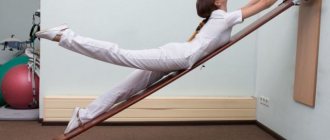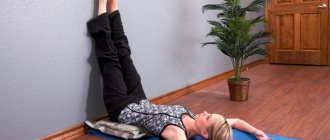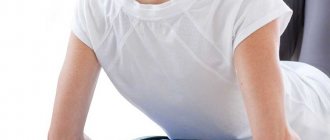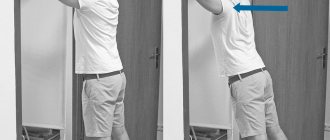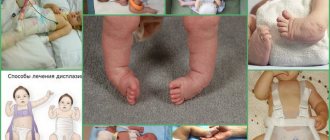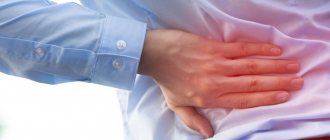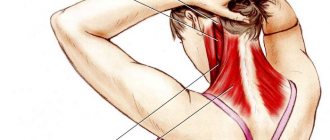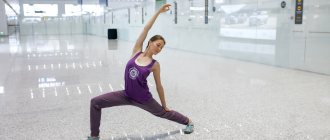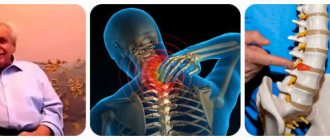Back problems can be solved, there are many ways, however, they require experience, knowledge and practice. For example, to practice Pilates you will need a trainer who will help and set the technique for numerous exercises. Another thing is that this is a special simulator – Evminov’s Profilaktor. Thanks to the board, a person does not need to study the features and nuances of, albeit effective, but complex techniques. This is achieved through excellent knowledge of anatomy and engineering.
What is Evminov's board
Evminov Vyacheslav Vladimirovich is the creator of a unique method of treatment and prevention of diseases of the spinal column. This man invented a special simulator, thanks to which you can engage in rehabilitation not only in special treatment centers, but also at home. Also, Vyacheslav Vladimirovich is the president of the Kyiv Vertebral Health Center and the Yuka sports club. He is also the first president of the Ukrainian Rowing Federation and an honored coach of Ukraine in rowing. Evminov was prompted to develop the technique and simulator by a serious spinal injury and the prospect of an operation with a questionable outcome.
The Evminov prophylactic device is a special orthopedic simulator consisting of an inclined surface, which is equipped with movable handles that can be installed at several levels. The device has a rope fastening and an elastic surface, which provide the necessary shock absorption for the spinal column during exercise.
Design Features
The treatment device was developed by Dr. Evminov. The design is patented, medically proven to be effective and approved by the Ministry of Health of Ukraine. The classic version of the Evminov board is represented by a board consisting of 8 slats of different types of wood with a crossbar and a stop for fixation. The connection of wooden planks is carried out using a special, scientifically proven technology, which creates the necessary deflection and soft shock absorption, ensuring the safety and effectiveness of the exercises. For convenient fastening, the Evminov dispenser has special loops and handles.
The design features of the Evminova board must take into account the following requirements:
- hardness level;
- slip coefficient;
- friction force;
- resistance to deformation.
For the effectiveness of the treatment, it is advisable to make the Evminov board individually for each person, based on the specific structure of the spinal column.
It is important to order the production of the structure from a specialist.
Evminov's board does not need to be installed in a specialized institution. You can fix the structure in a simple apartment or house on a surface that meets the fastening requirements. It is advisable that the fastening is carried out by a specially trained engineer. The design does not require a large amount of room space and when folded is presented in minimal dimensions.
The benefits and harms of training on the Evminov simulator
Benefit:
- The simulator allows you to train without axial load.
- Exercises on the Evminov prophylactic trigger the recovery processes.
- Helps treat most back diseases at any age.
- Can be used both in medical institutions, in gyms, and at home.
- Exercises on the Evminov simulator are aimed at stretching the spinal column, as well as working the deep muscles of the back.
- Helps increase the amount of intercellular fluid.
- Creates a powerful muscle frame.
- Improves diffuse nutrition of the intervertebral disc.
- Promotes the rapid release of pinched nerve endings.
Among the disadvantages, the existing contraindications should be highlighted.
Advantages and disadvantages of application
The device provides the opportunity to carry out physical tasks using minimal effort from the body. Specially selected sets of exercises allow you not to destroy the vertebrae and create minimal stress on the back muscles.
One of the disadvantages of this design is that its use is limited with some exercises, since performing them can lead to expansion of the paravertebral space.
You cannot do:
- bending the body to the right and left while lifting weights;
- twisting at an angle greater than 20 degrees;
- perform squats with weights.
Read also…. Medicine Chondrolone: instructions for use, price, analogues
Traction is a way to relax a person's spine passively by creating additional space in the intervertebral area. However, the effectiveness of therapy sometimes raises doubts among specialists, based on increased pain symptoms after exercise.
This is due to the fact that distraction exercises are performed in a horizontal position of the body at a slight angle, and as soon as a person gets up, changing the position to a vertical one, the pain increases due to reverse muscle contraction. Therefore, in specialized rehabilitation centers, exercise therapy is combined with physical therapy to perform tasks under the supervision of a doctor.
Contraindications
The simulator cannot be used when:
- Paralysis.
- Deep paresis.
- Cerebral palsy.
- Strokes.
- Encephalitis.
- Infectious diseases (including tuberculosis).
- Chronic calculous cholecystitis.
- Coral stones in the kidneys.
- During the postoperative period.
- Aneurysm of the aorta, heart, lungs, accompanied by pulmonary failure.
- Glaucoma.
- Recent spinal fractures.
- Closed or open craniocerebral injuries.
- Parkinson's and Alzheimer's diseases.
For what back diseases is it used?
The simulator is used for the following ailments:
- Intervertebral hernia – protrusion of intervertebral discs. Occurs when the integrity of the shell is violated.
- Curvatures of the spine, namely scoliosis, kyphosis and lordosis. May occur due to weakness of the back muscles.
- Poor posture is not considered a disease, but is a harbinger of serious problems with the spine.
- Intercostal neuralgia is an inflammation of the nerves accompanied by acute pain.
- Osteochondrosis (cervical, thoracic, lumbar) – leads to the development of changes in the cartilage of the intervertebral discs.
- Protrusion - in this pathological condition, intervertebral discs “fall out” into the canal of the spinal column without rupture of the capsules.
- Radiculitis is a disease of the spine in which the nerve endings of the spinal cord become inflamed.
- Scoliosis is a lateral curvature of the spine.
- Slipped discs are a serious injury in which a subsequent vertebra moves to the side. Usually accompanied by acute pain and a risk of serious damage to the health of the spine.
- Spinal injuries can occur at any age.
- Pinched nerve endings are various compression of nerve endings by vertebrae.
Operating principle
The Evminov board for the back was developed taking into account current knowledge about the structure and features of the development of the human spine. The human spinal column consists of vertebrae and intervertebral discs that perform a connecting function. All elements do not have their own arteries, therefore the blood supply to the vertebral structures is carried out thanks to the vessels that are located nearby.
If there are disturbances in the spinal column or it is deformed, the trophism of the intervertebral discs is impaired. As a result, their elasticity is lost and gradual destruction occurs.
What is the use of Evminov’s board in this case? With the help of this simulator, blood supply to the affected areas is restored by expanding the intervertebral space. Exercises on the board allow you to gradually restore the correct position of the vertebral elements, as well as restore impaired blood circulation, and reduce pronounced muscle tension in the back.
With the help of the Evminov simulator, the muscular corset of the back is strengthened and the intervertebral space is expanded when performing simple physical exercises.
A set of exercises on the Evminov board
Rotation of feet
The handles should be fixed at the desired height for the user, and the board should be set at an angle of 45 degrees. Holding the body on outstretched arms, holding the handles, the person begins to turn his feet from left to right.
Afterwards, the feet move up and down, pulling the toes toward and away from you. Then the cervical spine is involved in the movement. Movement of the neck is added, pulling it forward.
Knee flexion
The person, without changing position, begins to pull the foot towards the buttock, moving the foot along the plane of the board, without lifting it from the surface. The exercise is first performed with alternating legs, and ends with bending the legs at the same time.
Knee abduction to the side
To do this, in the same position, bend your leg at the knee and, without lifting your foot from the board, move your knee to the side, and then return to the starting position, straightening your leg. Again, the exercise is first performed with alternating legs and then with simultaneous abduction of the legs.
Leg abduction
You don't need to change position to do this. The movement is performed with a straight leg to the side. First, with alternating abduction of the legs, and then the movement is performed with both legs simultaneously.
Front leg swings
They are performed similarly to the previous movements.
Bringing the knees of both legs to the sides
In this exercise, the person must bend their knees and place their feet on the board. Then move both knees to one side, and then to the other, and then return your legs to their original position, lowering them down. Then the movement is repeated.
Pelvic lift
To perform this movement, you need to place your feet as close to your pelvis as possible and, pushing off with your feet, raise your pelvis as high as possible, bending your spine, then return to the starting position and repeat the movement.
Raising your knees to your chest
The movement is performed by contracting the abdominal muscles. During movement, you should pull your legs and head towards your chest.
Cross leg extensions to the sides
This exercise is performed on weight, lifting your feet off the board.
Exercise bike
Surely everyone understands and knows the exercise. Performed by weight.
These exercises are performed lying on your stomach.
Leg bends at the knees
Alternate and simultaneous bending of the knee joint is performed. When performing the movement, it is important to pull your toes and move your head up.
Leg extensions to the sides
Performed by weight.
Abductions of opposite limbs
At the same time, the leg and the opposite arm are abducted to the sides.
The next block of exercises is performed upside down. To do this, you need to fix your feet in the handles. You need to take a position face down.
Reverse crunches or hyperextensions
Having gathered your hands into a lock, you should lift your torso up. This exercise can be done as a complex at once: holding your hands behind your head, behind your back at the lower back and spreading them to the sides.
Stretching
In a face-down position lying on your stomach, you need to rest your hands on the bench and stretch up.
Simulator configuration
Evminov's simulator is a wooden board with an emphasis. It comes with 4 adjustable handles, aluminum clamps and loops for stretching the vertebrae in the cervical region. The bars of the exercise machine are connected in such a way that a person can safely and easily perform exercises on it.
The Evminov board for the spine is attached to a vertical surface, most often to a wall, with the ability to change its angle. This is necessary in order to exercise on the simulator at a negative inclination angle. That is, hanging on the board holding the handle.
The simulator is made individually depending on the characteristics of the patient’s spine. This approach to therapy is the most effective.
Recommendations for training at the Evminov dispensary
- Alternate exercises with each other for maximum effect.
- Choose an average pace for performing movements; when performing static exercises, the pace can be accelerated.
- It is not recommended to conduct a workout lasting more than one hour.
- The number of workouts per week should be in the range from 2 to 4.
- The exercises should be performed in 4-4 sets of 6-8 repetitions each.
- You can use weights, their weight should not exceed 16 kilograms.
- Course duration: 2-3 months.
